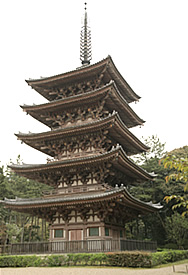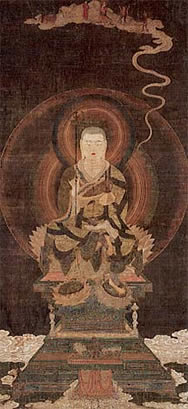Designated a World Cultural Heritage Site in December 1994, Daigoji Temple is a treaure of wood and paper cultural heritage. Since it was founded, Daigoji Temple has been developing its history and passing down its culture from generations to generations with the blessings of monks, emperors, noblemen, sumurais and the general public . All temple treasures and cultural heritage besides those found in the buildings and halls are kept in the "Reihokan", a 3600 ha complex. Daigoji Temple has 75,522 National Treasures, 425 important cultural assets and about 150,000 undesignated temple treasures and inherited cultural assets such as Buddha statues and paintings. Here, treasures from ancient and medieval Japan are quietly preserved, and every year in spring and autumn, the public can catch some of these pieces at the "Reihokan Special Exhibition".
Since the temple was founded, these treasures have been respected and tirelessly guarded by temple heads who respected the preservation of lineage and doctrine and thousands of monks, and the prayers of its followers.
In particular, during the "Haibutsu Kishaku" movement in the Meiji Era, when all things related to Buddhism were persecuted, many temples epsecially those in Kyoto and Nara were forced to sell their Buddhist statues and articles. This was also the period when many items were exported to other countries. Daigoji Temple was forced to face this major crisis too but fortunately it firmly believed that both schools of thought passed down to Samboin, namely the Samboin School, and the Keiin School, the Tozan School of Shugen, should be passed on and that no item, not even a piece of writing, would find its way out of the temple. As a result, it survived this difficult period.
From 1905, the temple started its original research and cataloging of the treasures. Over the years, the temple's efforts have come to be recognized as important academic records, led to the establishment of the "Daigoji Cultural Assets Research Insitute" and laid the foundations for the management of cultural assets. In addition, in its relentless pursuit to actively manage all the cultural assets it currently possesses, the temple has also constructed the "Daigoji Cultural Assets Comprehensive Management System" based on a database of all cultural assets such as old documents, Buddhist statues, artwork, buildings, etc. It plans to introduce some pieces of such inherited treasures on this website in the future.


